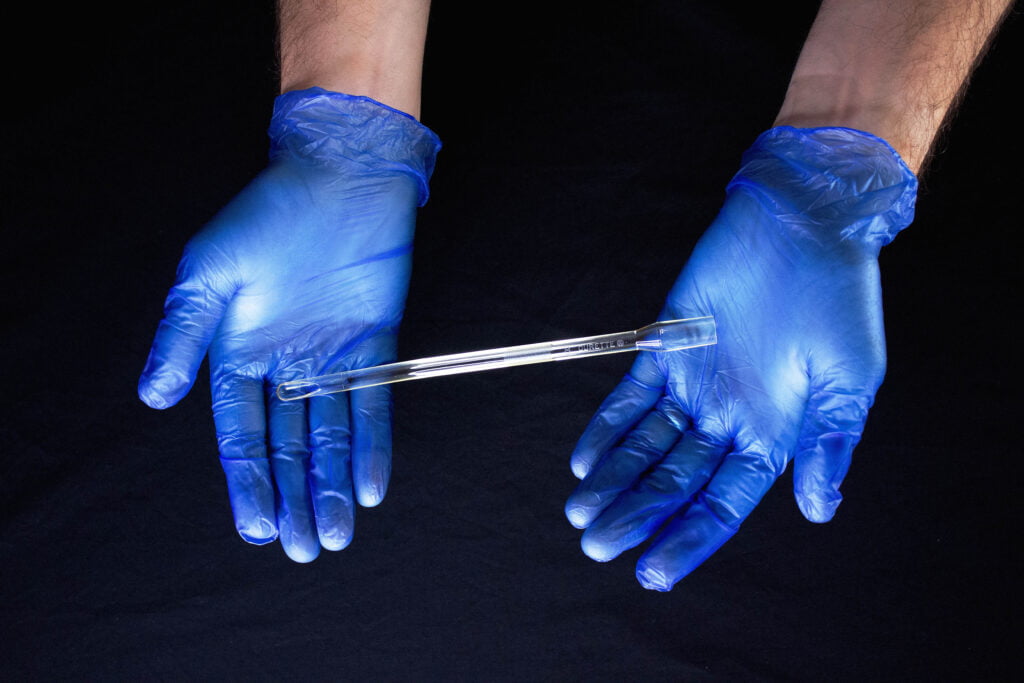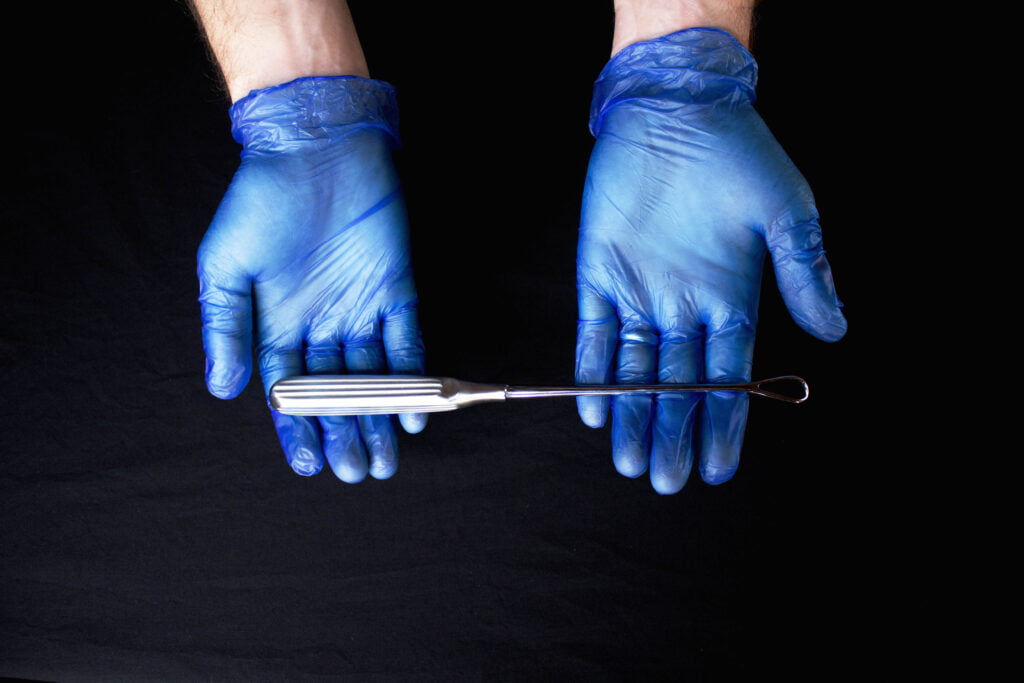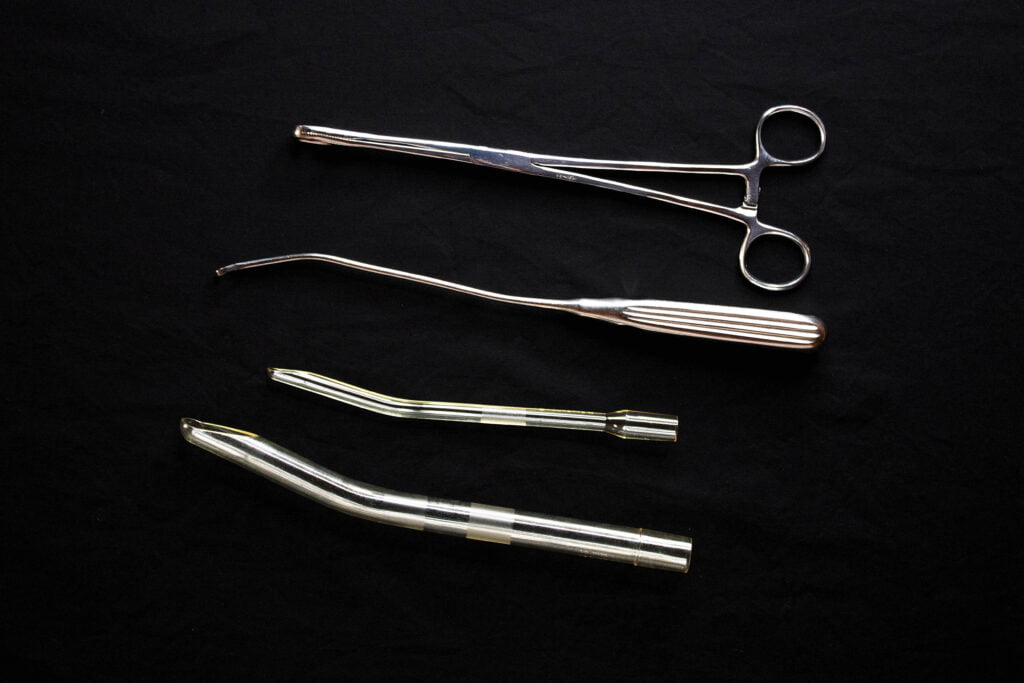review the
Methods of Abortion

Up to 11 weeks
Also known as chemical abortion, the abortion pill involves a series of two drugs. First, mifepristone is taken. This blocks the action of progesterone, the natural hormone needed to maintain the uterus’s nutrient-rich lining. As the lining of the uterus breaks down, the young human starves to death. 24–72 hours later, misoprostol is taken to induce painful contractions to deliver the deceased fetus.

Up to 14 weeks
After dilating the cervix, the abortion provider inserts a hollow plastic tube through the cervix and into the uterus. The tube is connected to a suction machine. When the machine is turned on, suction 10–20 times the force of a household vacuum cleaner pulls the fetus and placenta apart. The fetus is sucked out through the tube into a glass bottle, followed by the placenta. In some cases, the abortion provider must remove body parts from the tube to unclog it before completing the abortion.

Up to 14 weeks
The abortion provider dilates the cervix using a series of dilators. Then, a curette—a long tool with a looped blade at the end—is inserted through the cervix into the uterus. The abortion provider uses the curette to scrape the fetus and placenta away from the uterine wall. Then, the fetus and placenta are removed through the cervix with the curette or through suction.

13 to 24 weeks
These procedures are often performed past 15 weeks, when fetuses are capable of experiencing pain. Since the bones have hardened and are no longer soft enough to remove through suction, destructive procedures are required. Up to two days before the procedure, the abortion provider inserts laminaria in the cervix to dilate it. On the procedure day, the abortion provider inserts a suction tube through the cervix to remove the amniotic fluid. Sopher forceps with a looped end and serrated “teeth” are used to dismember and remove the fetus. The skull is crushed to facilitate removal. When all body parts have been removed, the abortion provider scrapes the uterus with a curette to remove any remaining tissue. After the abortion, the dismembered fetus is reassembled to ensure that all parts have been removed from the uterus.

25 weeks to birth
Induction abortion takes 2–3 days. On the first day, the abortion provider uses ultrasound guidance to insert a long needle through the woman’s abdomen and into the fetus. The provider injects digoxin or potassium chloride into the fetus’s heart, torso, or head. This triggers a painful heart attack, and the fetus dies. The provider may also begin to dilate the woman’s cervix with laminaria. The following day, the abortion provider replaces the laminaria and may perform an ultrasound to verify fetal death. Finally, the abortion provider administers drugs to induce delivery of the deceased fetus. If the fetus is not delivered whole, the abortion provider will initiate a D&E to remove the fetus piece by piece.

20 weeks to birth
Intact D&E abortions are currently banned in the US, but the ban is incredibly hard to enforce. It continues to be a widely-performed late-term abortion procedure. Two days before the procedure, dilation of the woman’s cervix is started with laminaria. On the day of the procedure, the abortion provider rotates the fetus into a breech position and pulls the fetus, into the vagina feet first, leaving the skull trapped in the cervix. The abortion provider uses forceps to puncture the back of the fetus’s skull. The forceps are opened and closed to sever the brain stem from the spinal cord. Suction is used to remove the fetus’s brain tissue. Lastly, the skull is crushed and the deceased fetus is delivered.
- Alcorn, Randy, Pro-Life Answers to Pro-Choice Arguments, Multnomah Press, Portland OR, 1994.
- Center for Disease Control and Prevention, MMWR, 05/95, p.29, Table 3.
- Guttmacher, Alan, Family Planning Perspectives, May/June 1994, Vol. 26, p. 101.
- National Right to Life Committee, Choose Life

